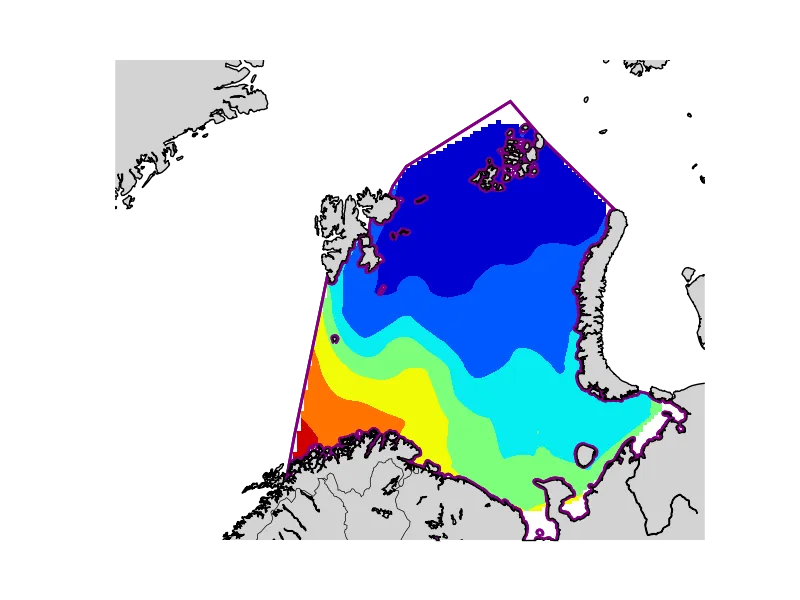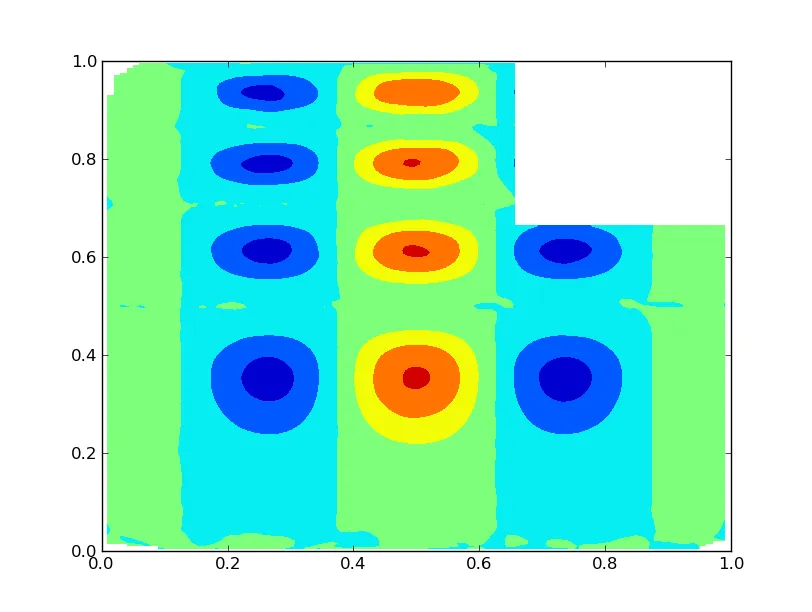我需要在多边形内创建海表温度(SST)数据的填充等高线图,但是我不确定最佳方法。我有三个包含X、Y和SST数据的1D数组,我使用以下代码创建附图:
p=PatchCollection(mypatches,color='none', alpha=1.0,edgecolor="purple",linewidth=2.0)
levels=np.arange(SST.min(),SST.max(),0.2)
datamap=mymap.scatter(x,y,c=SST, s=55, vmin=-2,vmax=3,alpha=1.0)
我希望能够将这些数据绘制成填充轮廓图(contourf而不是散点),并将其限制(剪切)在多边形边界内(紫色线)。非常感谢您提供如何实现此目标的建议。
更新: 我最初尝试使用griddata,但无法使其正常工作。然而,基于@eatHam提供的答案,我决定再试一次。当我选择方法'cubic'时,我的scipy griddata无法正常工作,因为它在网格化时一直挂起,但当我切换到matplotlib.mlab.griddata并使用'linear'插值时,它就可以工作了。关于遮罩边界的建议提供了一个非常粗略且不够准确的解决方案,不如我所期望的那样。 我搜索了有关如何剪切matplotlib中轮廓的选项,并在@pelson的答案中找到了一个答案,该答案在此链接中提供。我尝试了隐含在“轮廓集本身没有set_clip_path方法,但是您可以遍历每个轮廓集并设置它们各自的剪切路径”的建议解决方案。我的新的最终解决方案如下所示(请参见下图):
p=PatchCollection(mypatches,color='none', alpha=1.0,edgecolor="purple",linewidth=2.0)
levels=np.arange(SST.min(),SST.max(),0.2)
grid_x, grid_y = np.mgrid[x.min()-0.5*(x.min()):x.max()+0.5*(x.max()):200j,
y.min()-0.5*(y.min()):y.max()+0.5*(y.max()):200j]
grid_z = griddata(x,y,SST,grid_x,grid_y)
cs=mymap.contourf(grid_x, grid_y, grid_z)
for poly in mypatches:
for artist in ax.get_children():
artist.set_clip_path(poly)
ax.add_patch(poly)
mymap.drawcountries()
mymap.drawcoastlines()
mymap.fillcontinents(color='lightgrey',lake_color='none')
mymap.drawmapboundary(fill_color='none')
这个解决方案可以在北部边缘部分进行改进,以推断极端边缘。欢迎提出如何真正“填补”整个多边形的建议。我也想知道为什么mlab有效而scipy无效。


griddata的 scipy 和 mlab 版本及不同方法,这一点并不令人惊讶。我认为在数据范围之外进行插值的问题更多地涉及基本问题,并且需要采用可疑的方法来解决;) - tacaswell